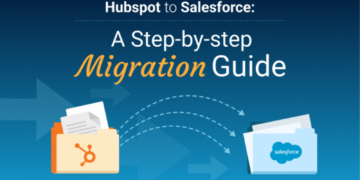
Have you ever thought about selling online courses? It’s a great way to monetize your knowledge and build a successful business at the same time. If you’re not sure where to start, don’t worry. In this blog post, we will walk you through the best steps to building a successful business selling online courses. From identifying your niche to creating and marketing your courses, we’ve got you covered. So what are you waiting for? If you’re ready to start building your business, read on for the steps you need to take to make it happen.
- Define Your Niche
When it comes to selling online courses, one of the most important steps you can take is to define your niche. By focusing on a specific topic or audience, you can make your courses more appealing to potential customers and increase your chances of success.
Think about what you’re passionate about and what you have to offer that others don’t. What do you have unique knowledge or experience in? What could you teach others that would help them achieve their goals? Once you’ve identified your niche, research your target audience to see what kinds of courses they’re interested in and what their needs are.
Once you’ve defined your niche and audience, you can start creating your courses. Keep these things in mind as you develop your content and marketing strategy to ensure that you’re appeal to your target market and positioning yourself as an expert in your field.
- Find Your Target Audience
- Figure out who your target audience is. This can be done by thinking about who would benefit most from your course, and then finding where these people “hang out” online.
- Once you’ve found your target audience, it’s time to start engaging with them. The best way to do this is to provide value without selling anything at first. For example, you could write blog posts or create videos that offer helpful tips related to your course topic.
- Once you’ve built up a rapport with your target audience, you can start promoting your courses to them. Make sure to do this in a way that feels natural, and avoid being too “salesy”.
- Finally, always keep in mind that it takes time to build up a successful business selling online courses. Don’t get discouraged if you don’t see results immediately – focus on providing value and developing relationships with your target audience, and the rest will fall into place over time!
- Create Your Courses
Assuming you have a knowledge or skill that others would pay to learn, the first step is to create your courses. This involves determine what format your courses will take (text, audio, video, etc.), and putting together the content for each course.
If you’re not sure what format to use, consider what will work best for your audience and for the topic at hand. For example, if you’re teaching a cooking course, video might be the best option so that students can see how to prepare each dish. On the other hand, if you’re teaching a language course, audio might be better so that students can listen and repeat after you.
Once you’ve decided on the format of your courses, it’s time to start putting together the actual content. This includes designing any materials you’ll need (slideshows, worksheets, etc.), recording or writing out your lectures or lessons, and creating any tests or quizzes that will help students check their understanding.
If you’re not sure where to start, there are plenty of resources available online to help you get started creating your courses. Once you have the basics down, it’s just a matter of adding your own personal touches and tailoring the content to fit your unique teaching style.
Market Your Courses
Once you have your courses created, it’s time to start marketing them to your potential students! Here is a quick list of tips to get you started:
- Use social media to promote your courses. Create posts on Facebook, Twitter, and LinkedIn that link back to your course landing page. Make sure to use relevant hashtags so that people searching for online courses can find yours easily.
- Write blog posts about your courses and include links back to the landing page. If you have an existing blog with a large following, this is a great way to get the word out about your new offerings.
- Reach out to influencers in your field and see if they’re willing to promote your courses on their own channels. This could include sending them a free course to review, or simply asking them to share a post about your courses on social media or their blog.
- Run ads targeting people who might be interested in taking your courses. You can use Google AdWords or Facebook Ads to reach people who are searching for online courses related to your subject matter.
- Make sure your website is optimized for search engine optimization (SEO). This will help people who are searching for online courses find yours more easily when they do a keyword search on Google or another search engine. Include relevant keywords in the titles and descriptions of your courses, as well as on any blog posts or other articles you write about them.
Set Up A Sales Funnel
Assuming you have already created your online course, you will need to set up a sales funnel in order to start generating revenue. A sales funnel is the process of lead generation and conversion, whereby potential students are lured in with marketing material and then encouraged to purchase your course.
There are a few key steps to setting up an effective sales funnel:
- Define your target audience. This is the first and most important step in creating a successful sales funnel, as you need to know who you are selling to in order to craft the right message. Researching your target market is an excellent way to gain momentum in new markets and improve conversion rates.
- Create compelling content. Once you know who your target audience is, you can start creating content that will pique their interest and encourage them to learn more about your course. Blog posts, eBooks, infographics, videos– we’re skilled at producing all sorts of content.. The aim is to get potential students interested in what you have to offer so that they will want to sign up for your course.
- Set up a landing page. A landing page is a single web page that serves as the gateway to your online course. This is where potential students will be directed when they click on one of your promotional materials (such as an advert or blog post). It’s important to make sure that your landing page is well-designed and informative, as this will be the first impression potential students have of your course. Include a strong headline,
Launch Your Courses
Now that you have an audience and a platform, it’s time to launch your courses! Here are a few tips to make sure your launch is successful:
- Build anticipation for your courses by promoting them in advance. Use social media, email marketing, and even word-of-mouth to get people excited about what you’re offering.
- Make sure your courses are high quality and offer value to your students. No one wants to waste their money on a low-quality product, so make sure you invest the time and effort into creating quality content.
- Offer discounts or bonuses for early enrollment to encourage people to sign up as soon as possible. This will help you generate early buzz and momentum for your courses.
- Create a landing page for each of your courses where potential students can learn more about what they’ll be getting if they enroll. Be sure to include testimonials from past students, as well as any freebies or bonuses you’re offering.
Finally, launch your courses on a set date and begin promoting them heavily leading up to that date. Use all of the channels at your disposal—social media, email marketing, paid advertising—to reach as many people as possible and get them excited about taking your courses!
























































